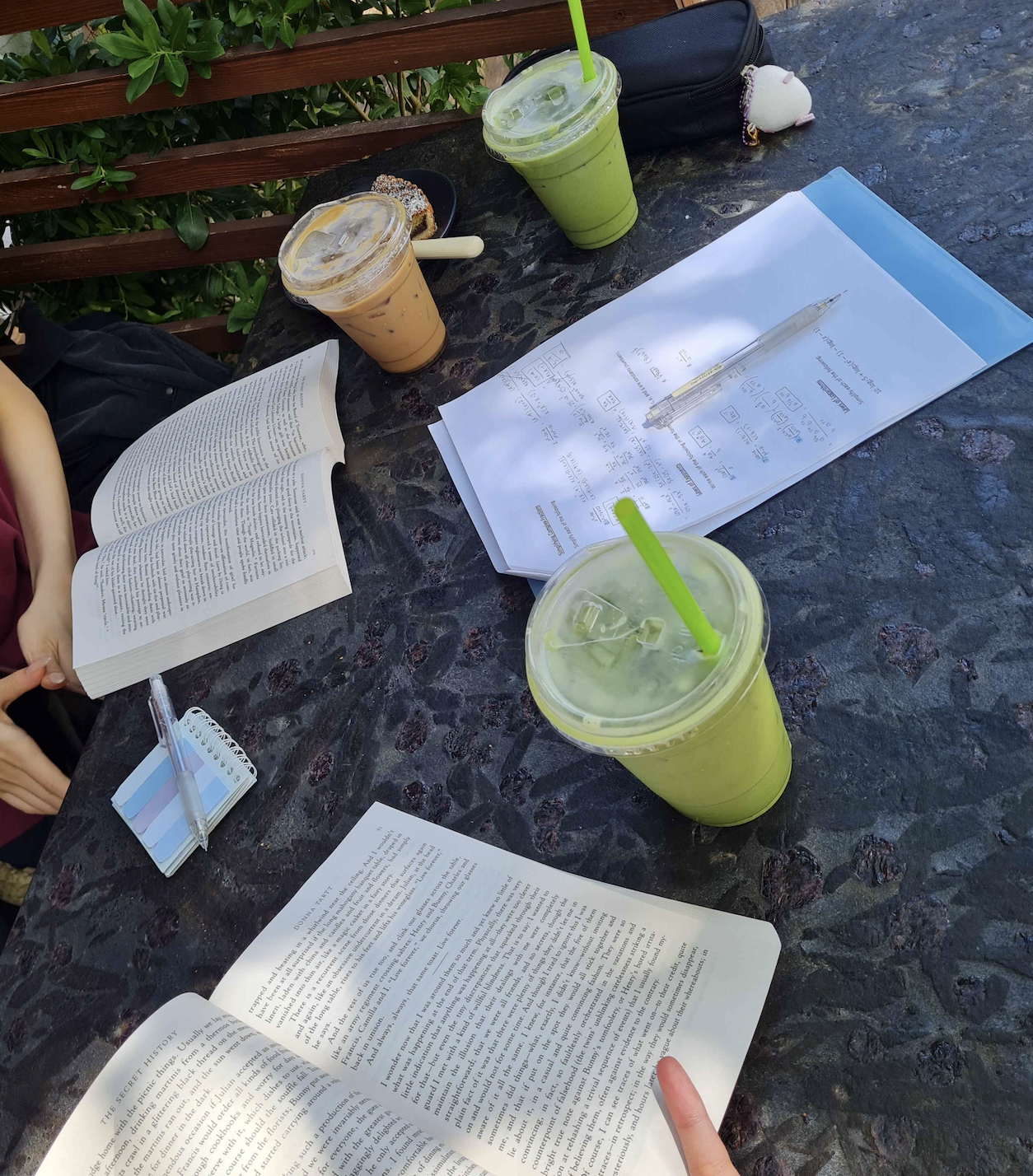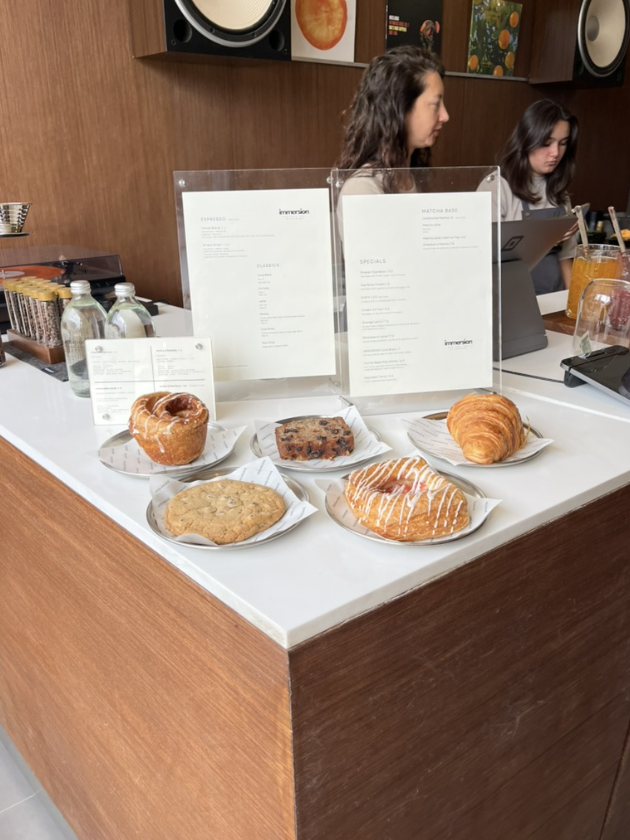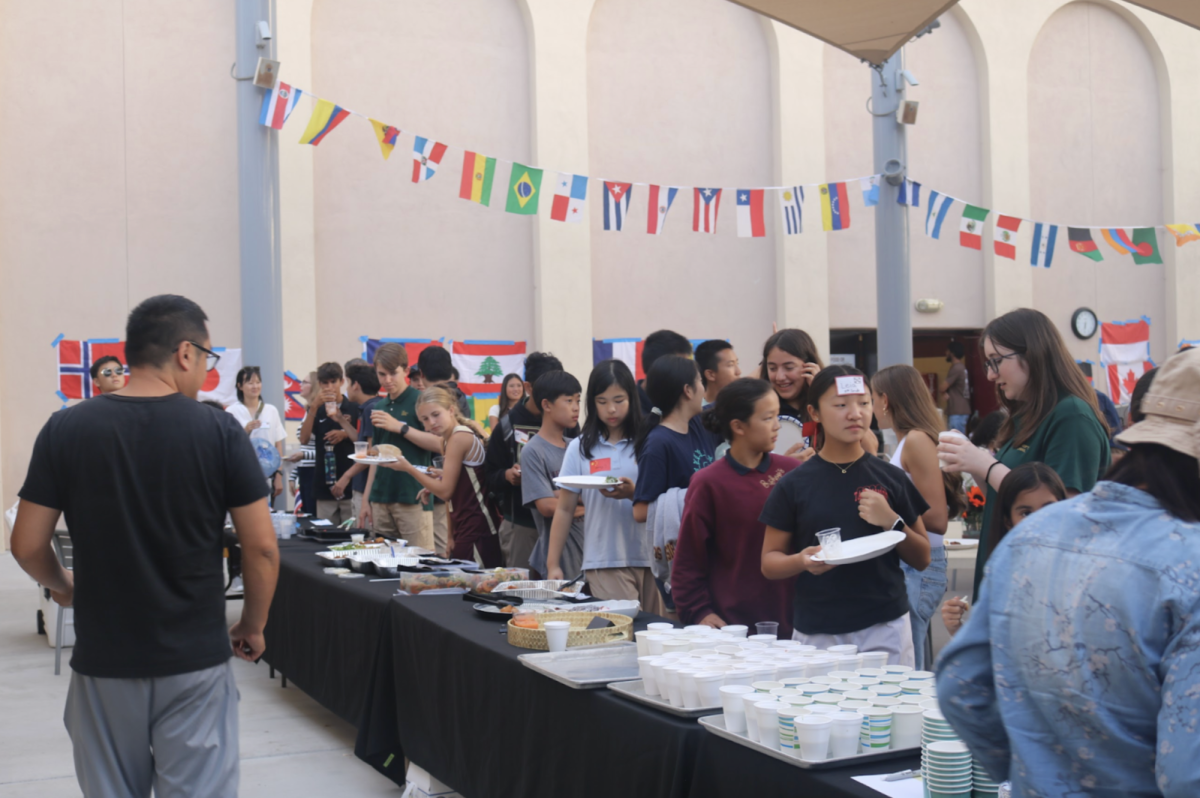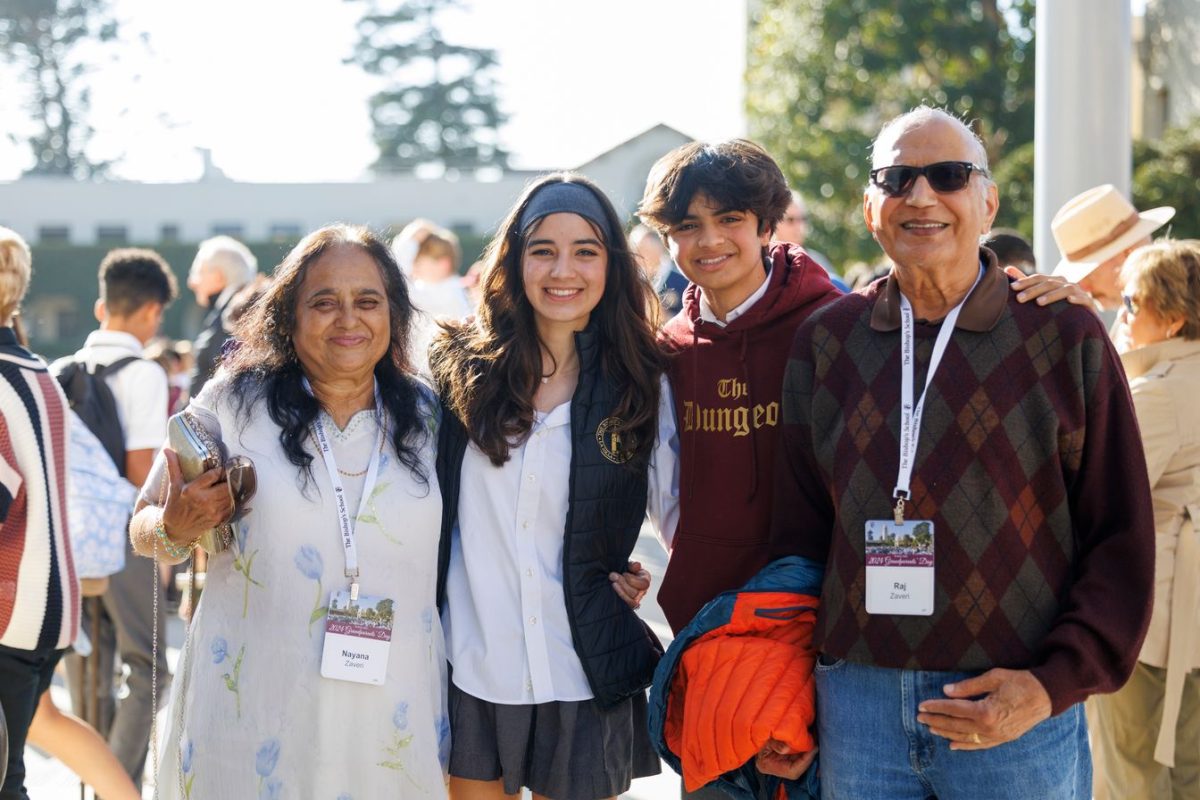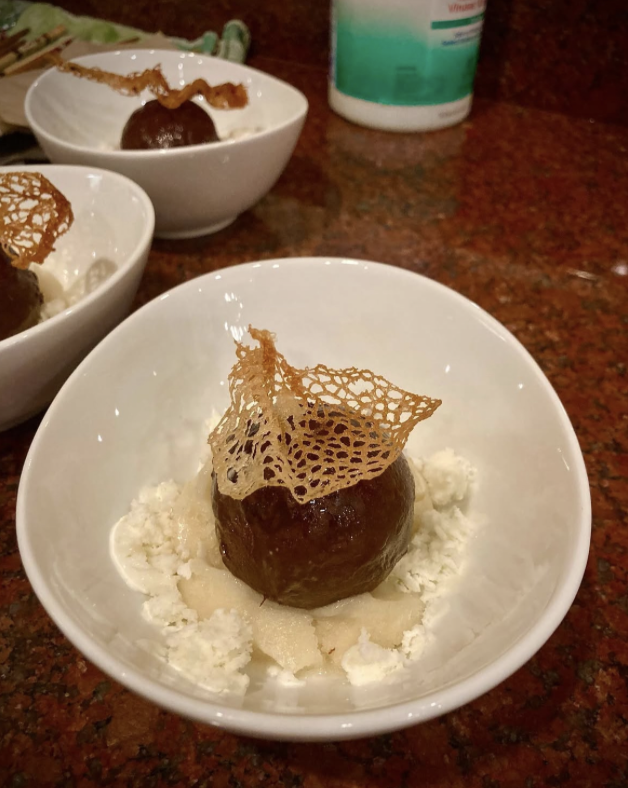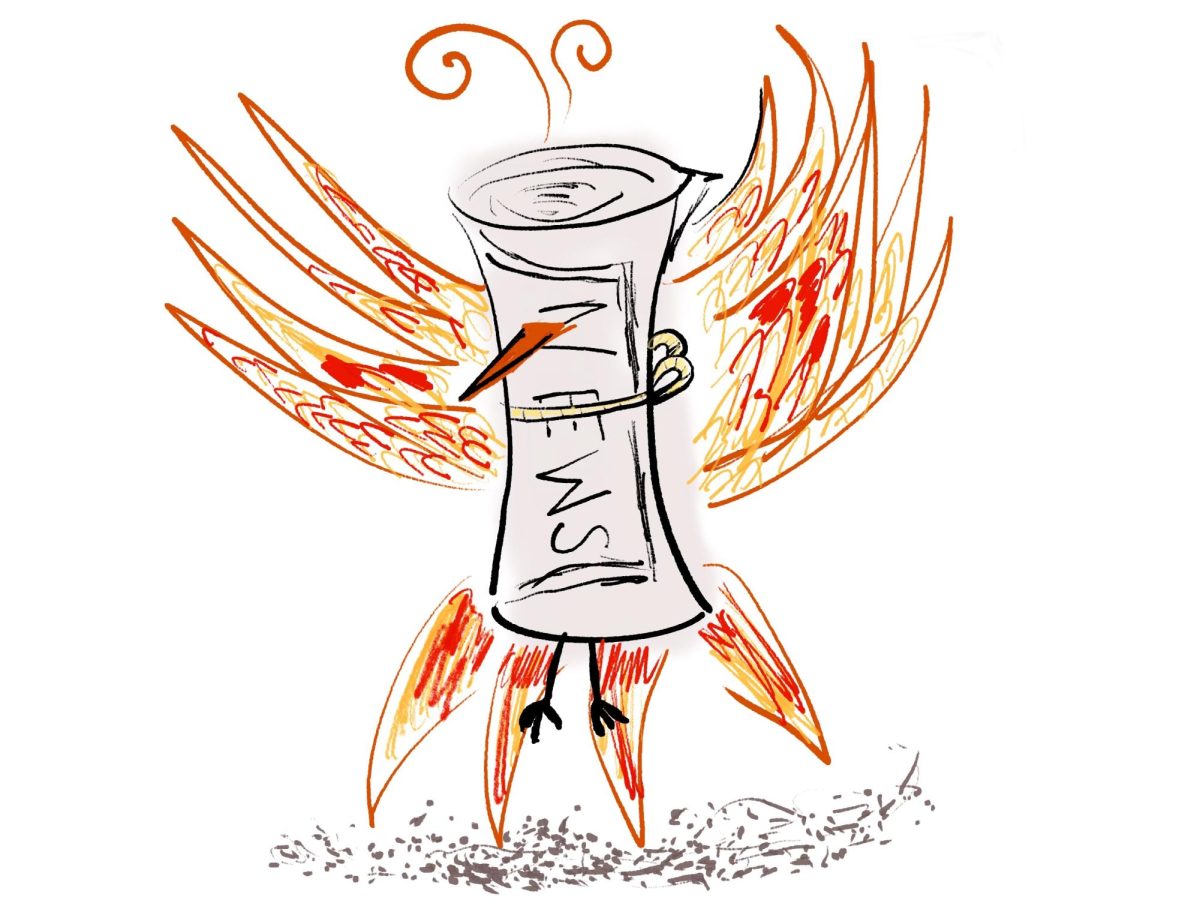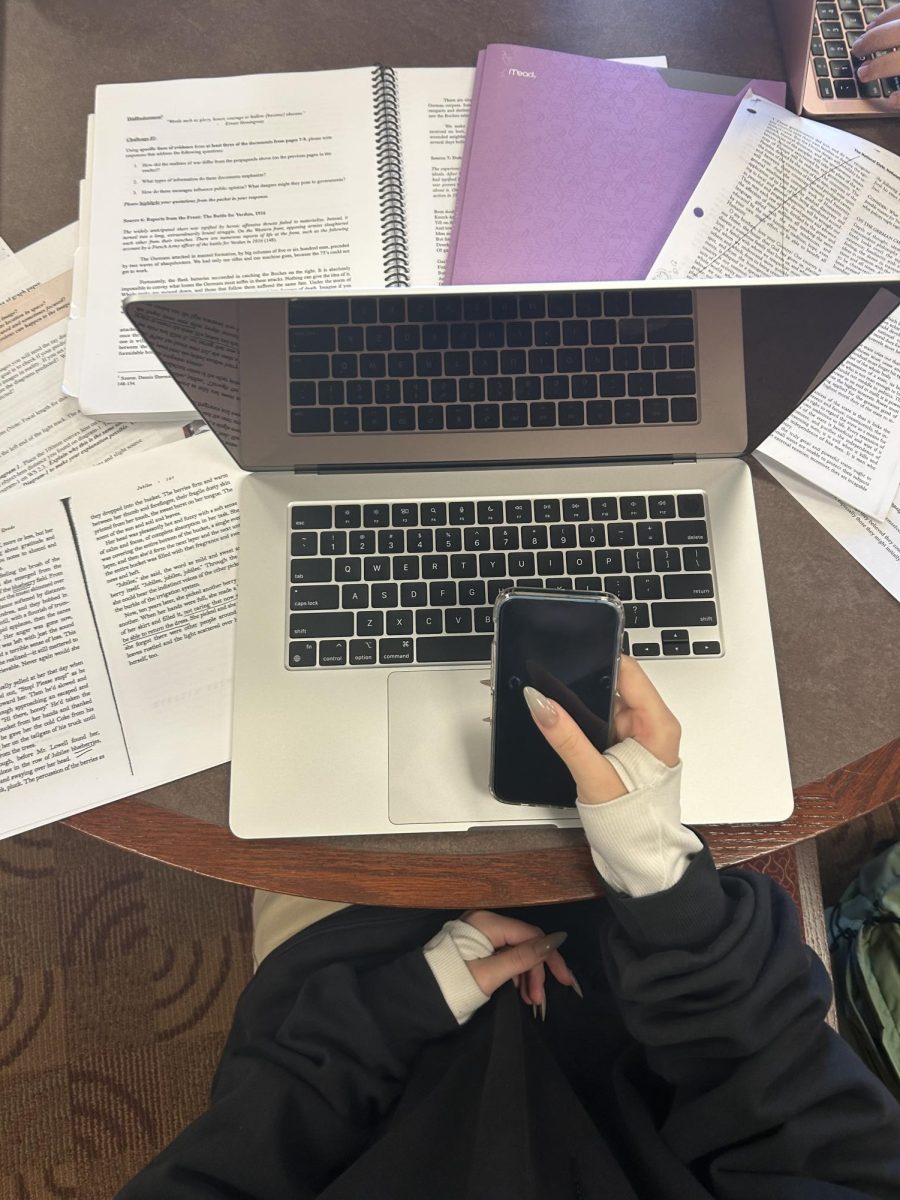Walking onto campus in the early morning La Jolla mist, you’re likely to see students holding their daily caffeine boost in their hands. It doesn’t stop at cups of hot espressos or cappuccinos: students carry iced vanilla or lavender lattes; Monsters, Red Bulls, or Celsius energy drinks; or Starbucks Strawberry Acai Refreshers.
In a 2025 study of caffeine consumption patterns, the National Library of Medicine (NIH) stated, “in current society, having a ‘24/7 lifestyle’ has become the norm.” They continued, that in order to keep up with a busy, high-achieving lifestyle, caffeine has been normalized and “heavily advertised by the media to adolescents” — a trend evident especially among Bishop’s high schoolers.
In order to manage heavy workloads and insufficient sleep, Bishop’s students look for a sense of alertness when they consume caffeine. Caffeine is a stimulant. Science teacher Mr. Benjamin Duehr explained that while food and sleep give your body energy, stimulants speed up the brain’s central nervous system to make you feel alert for a short period of time.
Grace Dempsey (’26) described, “I started drinking caffeine in eighth grade because it helped me focus and get through school. Now, I definitely need caffeine to function. If I don’t have it, I will be tired and unfocused throughout the day.”
Another study by the NIH explains that caffeine keeps you awake by blocking adenosine, a brain chemical that makes you feel tired. It also boosts dopamine, which controls motivation and happiness. This dopamine increase is what occurs in stronger drugs such as amphetamines and cocaine — though caffeine’s effects are weaker.
Caffeine dependency is common amongst caffeine consumers, and can become a daily habit. Gustav Westlake (’26) has caffeine before he starts his homework. Seffi Morrison (‘27) and Addison Simmons (’27) have an additional cup of coffee if they have a late night of studying or extracurriculars.
As caffeine consumption increases, the American Academy of Child and Adolescent Psychiatry’s recommended daily limit of 100 milligrams for minors is no longer enough to achieve the previous level of alertness. Stella McGuinness (’26), who drinks caffeine daily, explained, “Even with a cup of coffee in the morning, I’m still tired all day.” Jake Kim (‘26) added that he needs three shots of espresso in order to “wake [him] up.” To sustain alertness over time, many students, such as Wyatt Stone (‘26), have multiple caffeinated drinks per day. Wyatt said, “I have an espresso cold brew in the morning and then an energy drink after school.”
In today’s society, caffeine is more normalized among high schoolers. A Mintel Market Intelligence Report found that, “while adults 35 years or older reported first drinking coffee somewhere between their 18th and 20th birthdays, younger consumers start much earlier: consumers currently aged 18-24 first start drinking coffee at an average age of 15.”
This trend is reflected at Bishop’s. “When my parents were our age, it was unheard of for kids in high school to be drinking coffee. My dad only started drinking coffee when he was around 20,” Seffi said. Chair of Physical Education and Health teacher Coach Meghan Carr and Spanish teacher Profe Carlos Martell, both coffee lovers, attested to this; both didn’t start drinking coffee until their mid-20s.
Profe Martell explained that when he was in high school, local coffee shops were a place high schoolers could hang out, talk, and enjoy the flavor of coffee. He never thought of coffee as a stimulant, and sees it more as a daily ritual. Similarly, Coach Carr described coffee as a way to make her “feel whole.” While adults such as Profe Martell and Coach Carr connect coffee to identity, high schoolers drink it for more of what Profe Martell called the “culture of efficiency.”
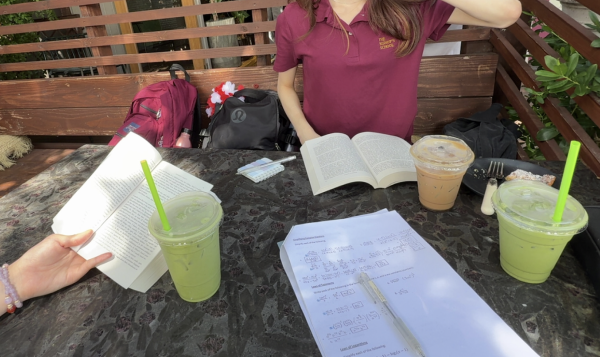
Seffi explained, “ My friends and I will say ‘If we go get coffee, then we’ll go do our work.’ It’s something that we correlate with being productive.” Statistics Teacher Mr. Juan Vidal said that he only drank caffeine in college because “everybody was drinking coffee. Like, ‘Oh my God, I’m studying for so many hours and to stay up late. I need this to help me.’ I didn’t need it.”
Dean of Students and Health Teacher Ms. Michelle Shea added, “I think it’s possible to get through a school day here without drinking caffeine. I think that, culturally, there is a little bit of social pride in not sleeping very much. There’s a little bit of social credibility almost in being tired, underslept, overworked.” Because of this, Addison felt that at Bishop’s, “ there’s a little stigma around not drinking caffeine.” She explained how the amount of sleep someone gets is viewed as a reflection of the level of work they’re putting into school, and added, “it’s easy to assume that someone who doesn’t drink coffee is getting enough sleep and isn’t putting in that hard work, which isn’t necessarily true.” Grace explained, “every time I hear someone doesn’t drink [caffeine] I am surprised,” but she added that she also feels “proud because I think it is a healthy way to live.”
Marina da Matta (’26) explained that when she was younger, coffee was portrayed as being inevitable. “ It was always mature to drink coffee. And everybody was like, ‘You’ll eventually drink it. There’s nothing you can do.’” Now, Marina explained, “ I feel like a little kid because I don’t drink coffee. Like I go out with my friends and they order coffee and I’m like, ‘I’ll take a hot chocolate.’”
Popular brands such as Starbucks and Celsius tie caffeine to the culture of efficiency with their marketing. Addison explained, “I drink Celsius and on the cans they have the slogans like ‘Live Fit.’ It advertises healthy energy and no sugar and that you’re gonna burn more calories while working out if you drink Celsius.” Grace added, “consumer culture impacts my perception of caffeine; the way Starbucks brands their drinks is always very compelling and exciting when you get it.”
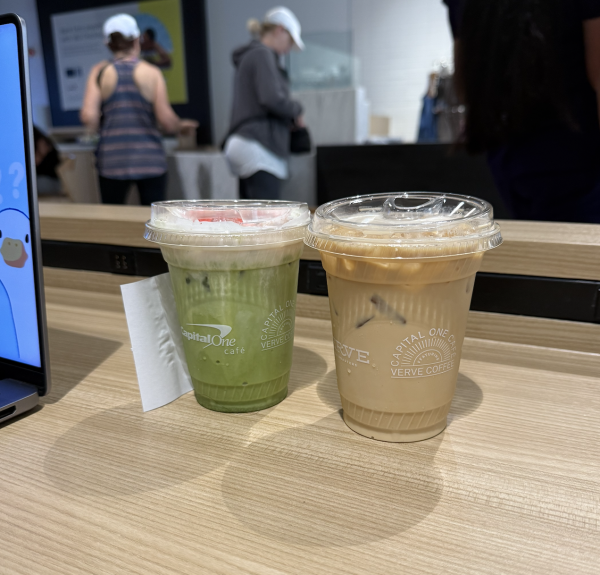
Seffi talked specifically about the compelling nature of Starbucks’ seasonal menus, saying, “I don’t normally go to Starbucks, but for the seasonal menu I do.” Giles Beamer (‘26) said, “Starbucks is like the trendy thing. And Better Buzz. The amount of times I see a middle schooler with a Strawberry Acai Lemonade Refresher… It’s like a gateway drug.”
Mr. Vidal described how these chain cafe brands also make caffeine more accessible to younger audiences by creating new flavors. “ I don’t like the taste of coffee, but I can change the taste by getting all those pumpkin spice lattes and caramel macchiatos,” he said. Similarly, Marina despises the taste of coffee, so when she wants caffeine, she drinks Monsters or Red Bulls.
Marina also described how coffee is often romanticized on social media, saying, “You see people on social media make iced coffees in a little Mason Jar, where they stir it with a glass or metal straw.” On TikTok, the hashtag “coffee” has 75.5 billion views and 9.6 million posts, and a 2025 Medium article described how influencers such as Emma Chamberlain, Jimmy Butler, and Logan Paul have launched their own caffeine brands — which are especially appealing for younger viewers.
A drink that was once associated with adulthood has slipped into the lives of teenagers burdened with busy schedules, normalized with the rise of café chains and romanticization in the media. From early mornings to late night grinds, caffeine has become an essential part of many Bishop’s students’ lives, reflecting not only heavy workloads but a shift of caffeine culture in today’s society.



